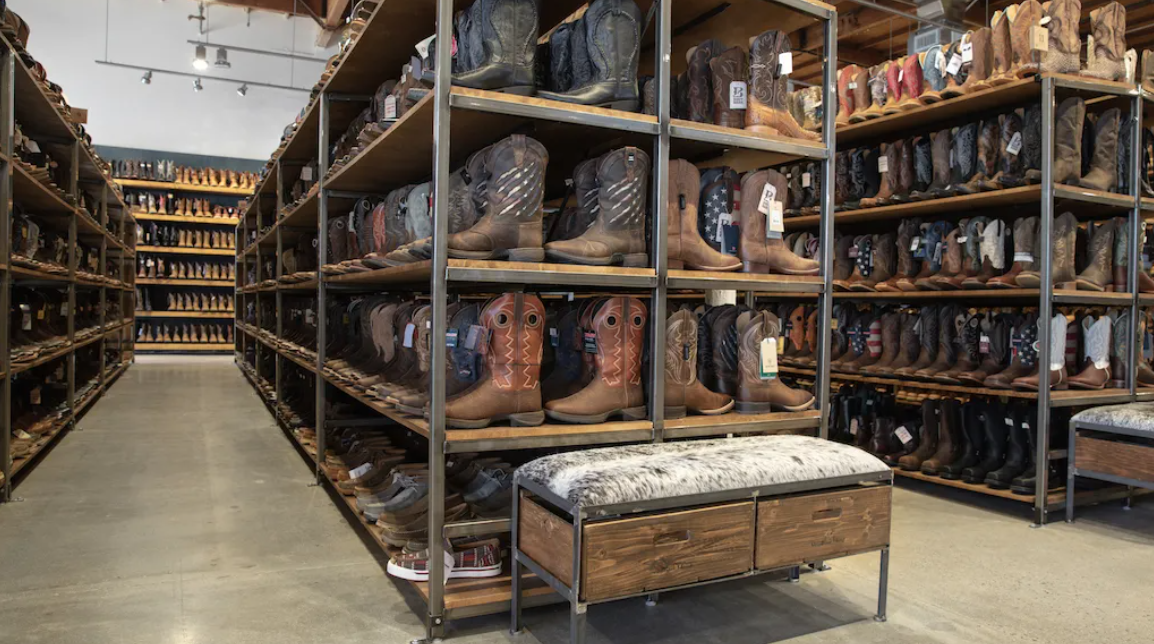Boot Barn CEO Believes Company Can Have 900 US Stores
Boot Barn president and CEO Jim Conroy updated analysts on the progress of company’s strategic initiatives, which heavily involves opening new stores, on Thursday, following a less than stellar performance in the second quarter.
In the second quarter of fiscal 2024, the Irvine, Calif.-based footwear company reported a 6.5 percent increase in net sales to $374.5 million in the second quarter of fiscal 2024, up from $351.5 million in the prior-year period.
Same store sales took a hit in the quarter, however. In Q2, the company saw consolidated same store sales decrease 4.8 percent, retail store same store sales decline 3.8 percent and e-commerce same store sales drop 11.7 percent.
But despite its declining same-store sales in the period, Conroy remained positive on the company’s quarterly earnings call on Thursday.
“We are pleased with our second quarter results, which reflect the continued expansion of the brand’s national footprint,” the CEO told analysts. “New store sales were partially offset by a mid-single-digit decline of 4.8 percent in consolidated same store sales, which was within our guidance range. We feel good about this performance, considering that the business was cycling a plus 2 percent comp last year, on top of a plus 62 percent in the prior year period.”
Conroy noted that Boot Barn’s “consistent success” is a result of the team’s execution of four strategic initiatives and “underscores the future growth potential” of the brand.
One of these key growth tenets is the expansion of the company’s store portfolio across the country. In the second quarter, Conroy said that Boot Barn opened 10 new stores, bringing the total openings in the last 12 months to 50, with 93 in the last two years. Boot Barn currently has a total of 371 stores across the U.S.
“We continue to be quite pleased with the success of our store rollout, as the group of stores opened over the past two years is projected to pay back within 18 months, with each individual store expected to pay back in less than three years,” the CEO said. “We believe we have the potential for 900 or more stores in the United States, which will provide a significant lever for future growth in sales and earnings.”
He also noted that Boot Barn is well on its way with completing its store remodel and relocation program, with only 60 stores left on the to-do list.
The company’s second initiative focuses on driving same-store sales growth. “Our comp sales were in line with expectations through August, but September experienced softer than expected results,” Conroy said. “The softening trend in same store sales was broad-based across both geographies and merchandise categories, leading us to believe that the change in trajectory was driven by macro pressures and a decline in consumer spending.”
Conroy added that its more “functional categories,” such as work boots and men’s western merchandise, has experienced less of a decline than Boot Barn’s “discretionary categories,” like women’s western merchandise. According to the executive, ladies’ boots were down 8 percent in Q2 while women’s apparel fell 9 percent in the period.
“While we believe that the macro pressures are transitory, we are managing our inventory levels, markdown plans, and expense structure closely to maximize earnings despite pressure in same-store sales growth,” the executive said. “In fact, the team has done a very good job of positioning our assortment and inventory levels as we enter the holiday season.”
Boot Barn’s third initiative looks to strengthen the company’s omnichannel leadership. In the second quarter, e-commerce sales, which represent approximately 10 percent of total revenue, declined 11.7 percent.
“Our main site, bootbarn.com, posted a modest, low single-digit sales decline, faring much better than the balance of our e-commerce business,” Conroy said. “It is encouraging that our namesake Boot Barn site is maintaining its volume, and while we would like to grow our other sites, they serve a different strategic purpose, and cater to a more price-sensitive customer.”
For the final initiative, the company is promoting exclusive brands. During the second quarter, exclusive brands continued to demonstrate strong double-digit sales growth, with penetration increasing by over 600 basis points to 38.6 percent. “The product design and development team continues to find opportunities to build market share, and our exclusive brand business alone is on track to generate more than $600 million in annual revenue,” Conroy noted.
Looking ahead, Conroy added that Boot Barn expects to build approximately 26 stores in the final two quarters of the year, in the hopes of driving top-line sales market share. “We also expect to see ongoing expansion in our merchandise margin rate for the balance of the year, despite a decline in same-store sales, which is a testament to nimble execution by the entire merchandising team,” he said.
